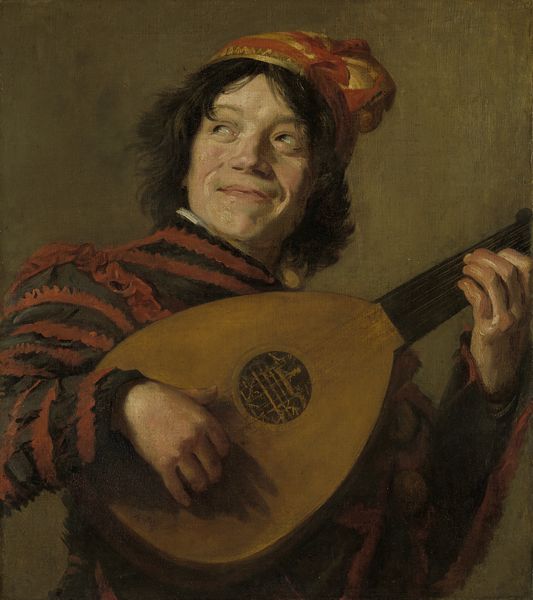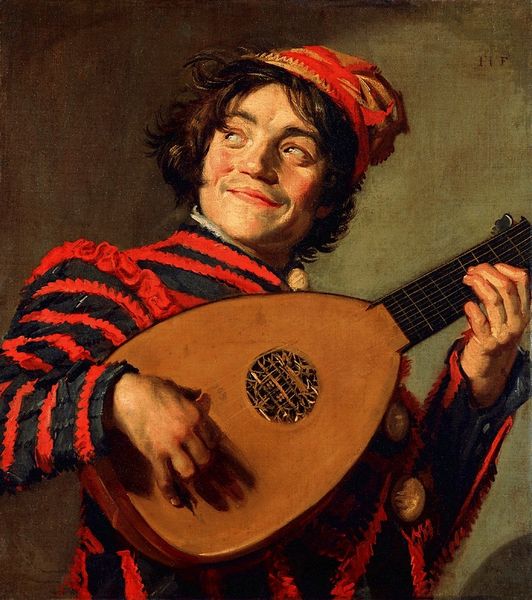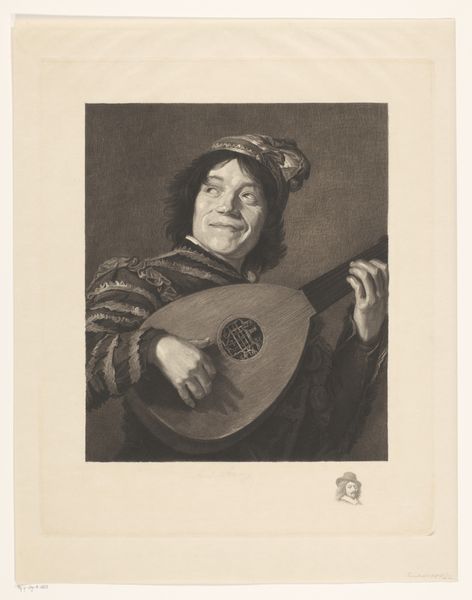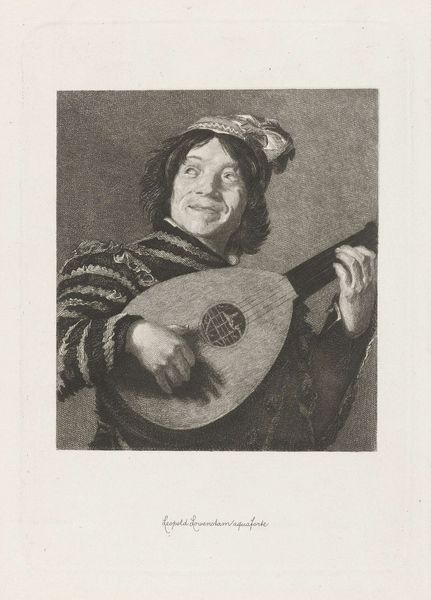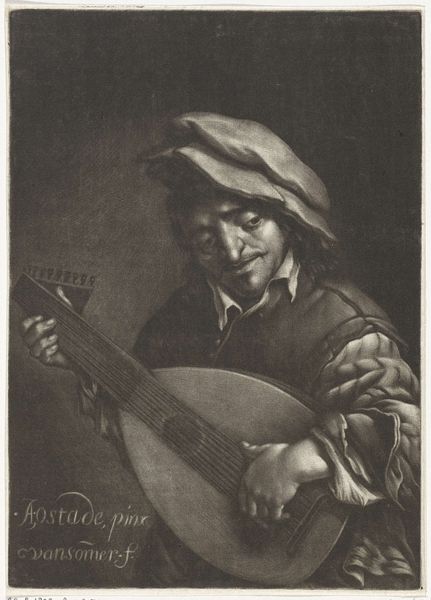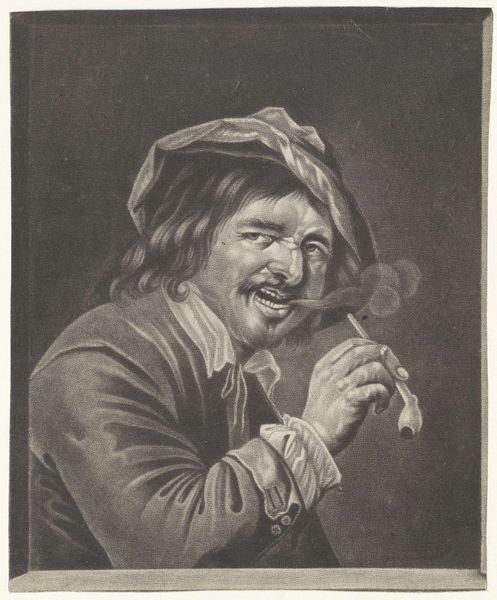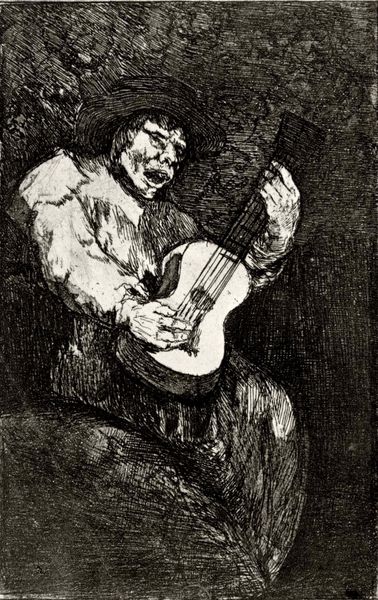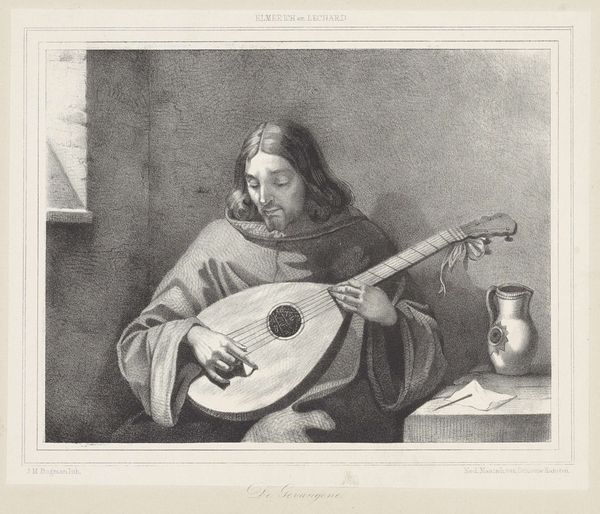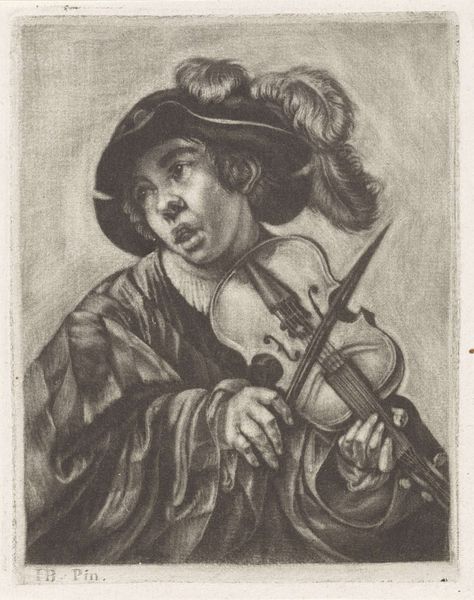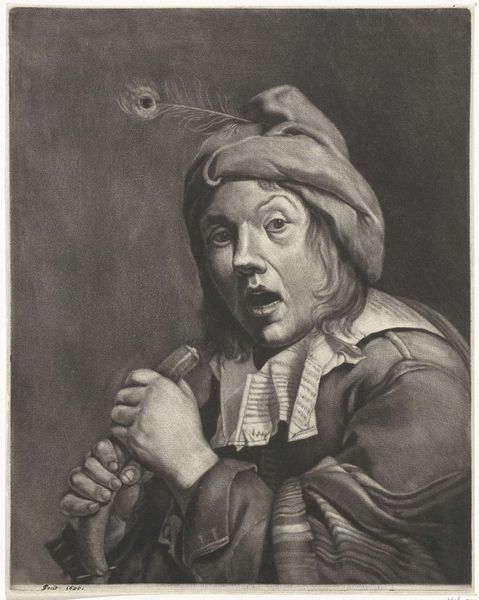
Copyright: Rijks Museum: Open Domain
Alfred Louis Bahuet's 'De nar, naar Frans Hals' captures a jester with a lute, a figure brimming with symbolic weight. The lute, historically associated with harmony and revelry, is here juxtaposed with the jester, a character permitted to speak truth to power through humor. This duality embodies a psychological tension—a dance between mirth and melancholy, wisdom and folly. Think of the medieval fool, whose image echoes through time, from Shakespearean dramas to Picasso’s harlequins. These figures, often marginalized, serve as poignant mirrors to society. The jester's gaze, averted and knowing, hints at hidden depths. His is the laughter that conceals a deeper understanding. It is through such cultural symbols that the past speaks to us, revealing the complex layers of human experience, and reminding us of the cyclical nature of archetypes.
Comments
No comments
Be the first to comment and join the conversation on the ultimate creative platform.

